 Preventing, detecting and managing self-heating events in wood pellet storage is one of the major challenges of the biomass industry. In September, the Wood Pellet Association of Canada (WPAC), FutureMetrics and Ørsted collaborated to host a Safe Wood Pellet Storage Workshop in Copenhagen, Denmark, to address these challenges. The two-day event kicked off with a half-day tour of Ørsted’s Bioenergy Carbon Capture and Storage (BECCS) installation at the Asnæs combined heat and power (CHP) plant. Attendees received a firsthand look at CHP technology and Ørsted’s approach to carbon capture, setting the stage for the technical discussions that followed. The second day’s workshop included expert-led sessions focusing on real-world case studies, technical insights, and collaborative solutions. …The workshop is the first in a series of activities to ensure continuity and build an international community committed to reducing risk and enhancing operational resilience. Workshop presentations are available on pellet.org.
Preventing, detecting and managing self-heating events in wood pellet storage is one of the major challenges of the biomass industry. In September, the Wood Pellet Association of Canada (WPAC), FutureMetrics and Ørsted collaborated to host a Safe Wood Pellet Storage Workshop in Copenhagen, Denmark, to address these challenges. The two-day event kicked off with a half-day tour of Ørsted’s Bioenergy Carbon Capture and Storage (BECCS) installation at the Asnæs combined heat and power (CHP) plant. Attendees received a firsthand look at CHP technology and Ørsted’s approach to carbon capture, setting the stage for the technical discussions that followed. The second day’s workshop included expert-led sessions focusing on real-world case studies, technical insights, and collaborative solutions. …The workshop is the first in a series of activities to ensure continuity and build an international community committed to reducing risk and enhancing operational resilience. Workshop presentations are available on pellet.org.
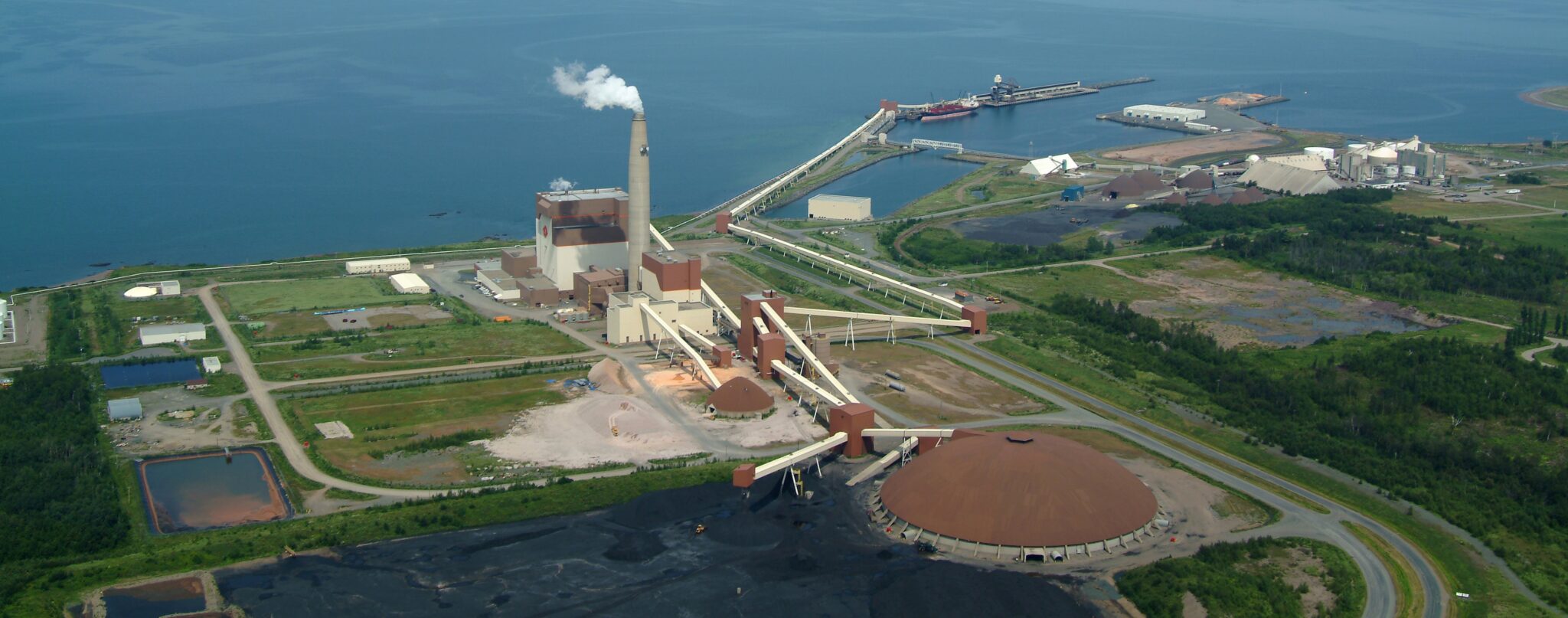




 THUNDER BAY — A number of stakeholders, largely from the forestry and energy sectors, got to provide regional input into a series of ongoing cross-province talks about energy policy. The Vaughn and Thunder Bay Chambers of Commerce held a roundtable discussion in the city on Oct. 2. The goal was for regional interests to provide requested input into an issues paper on energy being developed by the Toronto-based business lobby. …In Northwestern Ontario, she said, that includes longstanding sources like hydroelectricity and natural gas, but also continually-emerging opportunities connected to forestry and biomass. “We also talked a lot about the opportunities through the forest sector and biomass and the many things that can be created by harnessing forest products into energy,” Robinson said. “I think the most important thing was talking about how, from a forestry perspective, it really does check all the boxes.”
THUNDER BAY — A number of stakeholders, largely from the forestry and energy sectors, got to provide regional input into a series of ongoing cross-province talks about energy policy. The Vaughn and Thunder Bay Chambers of Commerce held a roundtable discussion in the city on Oct. 2. The goal was for regional interests to provide requested input into an issues paper on energy being developed by the Toronto-based business lobby. …In Northwestern Ontario, she said, that includes longstanding sources like hydroelectricity and natural gas, but also continually-emerging opportunities connected to forestry and biomass. “We also talked a lot about the opportunities through the forest sector and biomass and the many things that can be created by harnessing forest products into energy,” Robinson said. “I think the most important thing was talking about how, from a forestry perspective, it really does check all the boxes.”



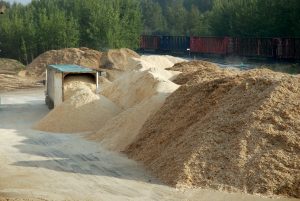 Given market sentiment and operating rates, in addition to recent mill closures and curtailments, how has demand for wood fiber changed recently and over the past 10 years? …Total capacity of the wood-using U.S. pulp and paper sector declined 18% in the past 10 years. This decline is specific to wood-using mills, excluding facilities that rely exclusively on recycled fiber, but the sector reported drops in all end uses, with reductions in printing and writing capacity falling 49%. This represented over half of the lost capacity nationwide. Newsprint, household/sanitary, and market pulp segments also had notable declines, each representing 10%-16% of the lost capacity. Regionally, capacity reductions in the U.S. South accounted for most of the volume lost (64%), with the U.S. West and North each representing 18%. The West experienced the largest and most severe drop in capacity for a given region, with pulp and paper mill closures and reductions decreasing capacity by 26%.
Given market sentiment and operating rates, in addition to recent mill closures and curtailments, how has demand for wood fiber changed recently and over the past 10 years? …Total capacity of the wood-using U.S. pulp and paper sector declined 18% in the past 10 years. This decline is specific to wood-using mills, excluding facilities that rely exclusively on recycled fiber, but the sector reported drops in all end uses, with reductions in printing and writing capacity falling 49%. This represented over half of the lost capacity nationwide. Newsprint, household/sanitary, and market pulp segments also had notable declines, each representing 10%-16% of the lost capacity. Regionally, capacity reductions in the U.S. South accounted for most of the volume lost (64%), with the U.S. West and North each representing 18%. The West experienced the largest and most severe drop in capacity for a given region, with pulp and paper mill closures and reductions decreasing capacity by 26%.
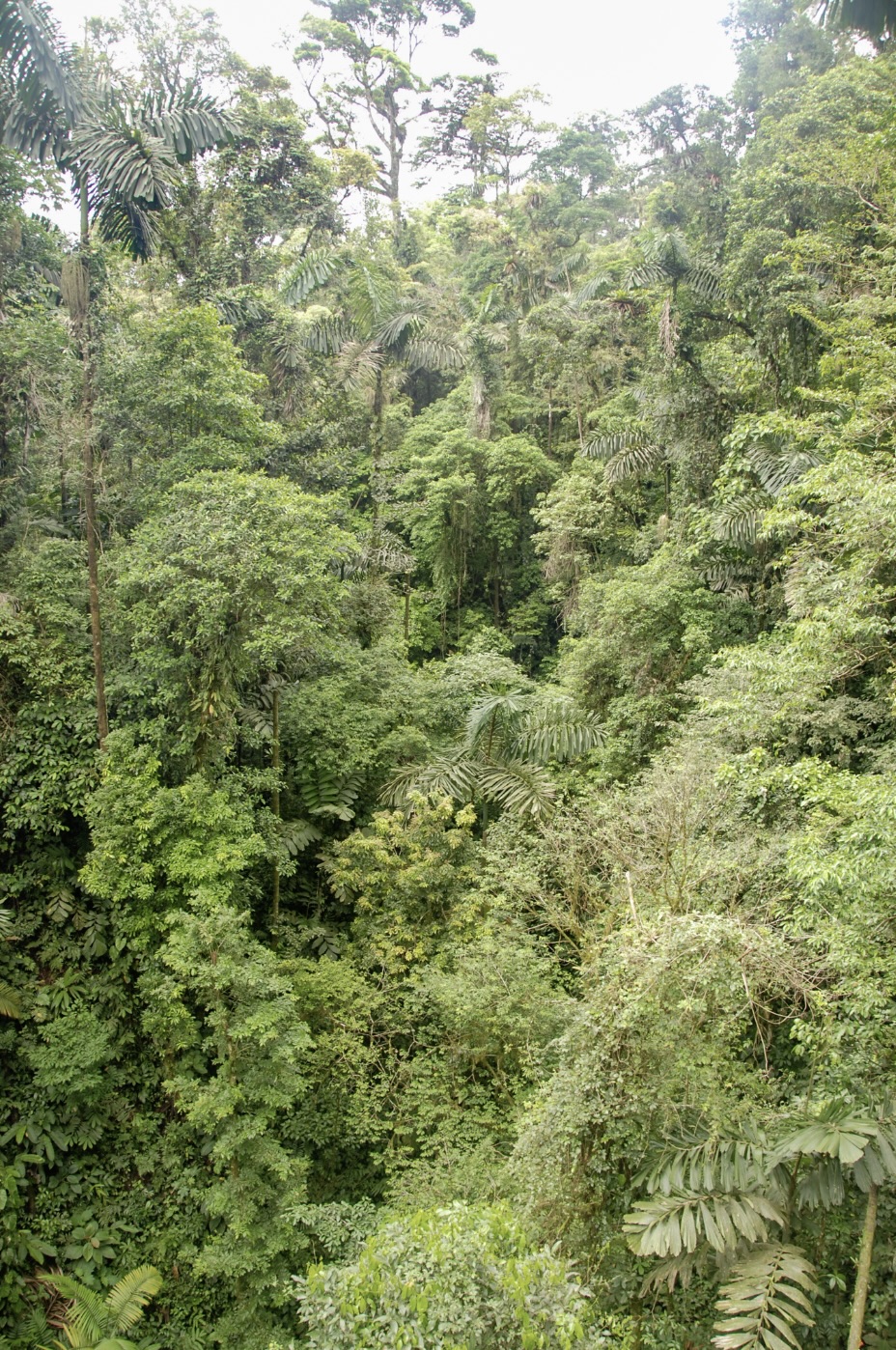 At New York Climate Week, a coalition of 34 national governments unveiled a decisive blueprint called the Forest Finance Roadmap for Action, aimed at closing the substantial funding shortfall undermining global efforts to halt deforestation. The plan, developed in partnership with Brazil and backed by the United Nations Environment Programme (UNEP), targets the estimated $66.8 billion annual finance gap in tropical nations. The roadmap distinguishes itself as the first unified framework to bring together governments from both the Global North and South under a shared agenda for forest finance, according to an announcement made by the Forest & Climate Leaders’ Partnership (FCLP). It seeks to move beyond pledge-making toward deployable, investment-ready strategies aligned with the COP30 Action Agenda and the Glasgow Leaders’ Declaration.
At New York Climate Week, a coalition of 34 national governments unveiled a decisive blueprint called the Forest Finance Roadmap for Action, aimed at closing the substantial funding shortfall undermining global efforts to halt deforestation. The plan, developed in partnership with Brazil and backed by the United Nations Environment Programme (UNEP), targets the estimated $66.8 billion annual finance gap in tropical nations. The roadmap distinguishes itself as the first unified framework to bring together governments from both the Global North and South under a shared agenda for forest finance, according to an announcement made by the Forest & Climate Leaders’ Partnership (FCLP). It seeks to move beyond pledge-making toward deployable, investment-ready strategies aligned with the COP30 Action Agenda and the Glasgow Leaders’ Declaration. ARIZONA — Restoring Arizona’s wildfire-threatened forests depends on building a second biomass-burning power plant, a coalition of public officials and timber industry executives said. The state’s only biomass-burning plant is operating at capacity, which means many forest thinning and restoration projects will stall without a second plant to process low-value wood slash and biomass, speakers said at the October meeting of the Natural Resources Working Group. “It’s a biomass apocalypse,” said Brad Worsley, head of Novo BioPower, the state’s only biomass-burning power plant. Eastern Arizona Counties Executive Director Pascal Berlioux said he was frustrated by the lack of state and federal action after years of discussion about how to make forest restoration economical. …Novo BioPower in Snowflake remains the state’s only biomass-burning power plant. …Worsley said the plant survived shortages caused by delays in Forest Service approval of thinning projects and is now operating at its limit.
ARIZONA — Restoring Arizona’s wildfire-threatened forests depends on building a second biomass-burning power plant, a coalition of public officials and timber industry executives said. The state’s only biomass-burning plant is operating at capacity, which means many forest thinning and restoration projects will stall without a second plant to process low-value wood slash and biomass, speakers said at the October meeting of the Natural Resources Working Group. “It’s a biomass apocalypse,” said Brad Worsley, head of Novo BioPower, the state’s only biomass-burning power plant. Eastern Arizona Counties Executive Director Pascal Berlioux said he was frustrated by the lack of state and federal action after years of discussion about how to make forest restoration economical. …Novo BioPower in Snowflake remains the state’s only biomass-burning power plant. …Worsley said the plant survived shortages caused by delays in Forest Service approval of thinning projects and is now operating at its limit.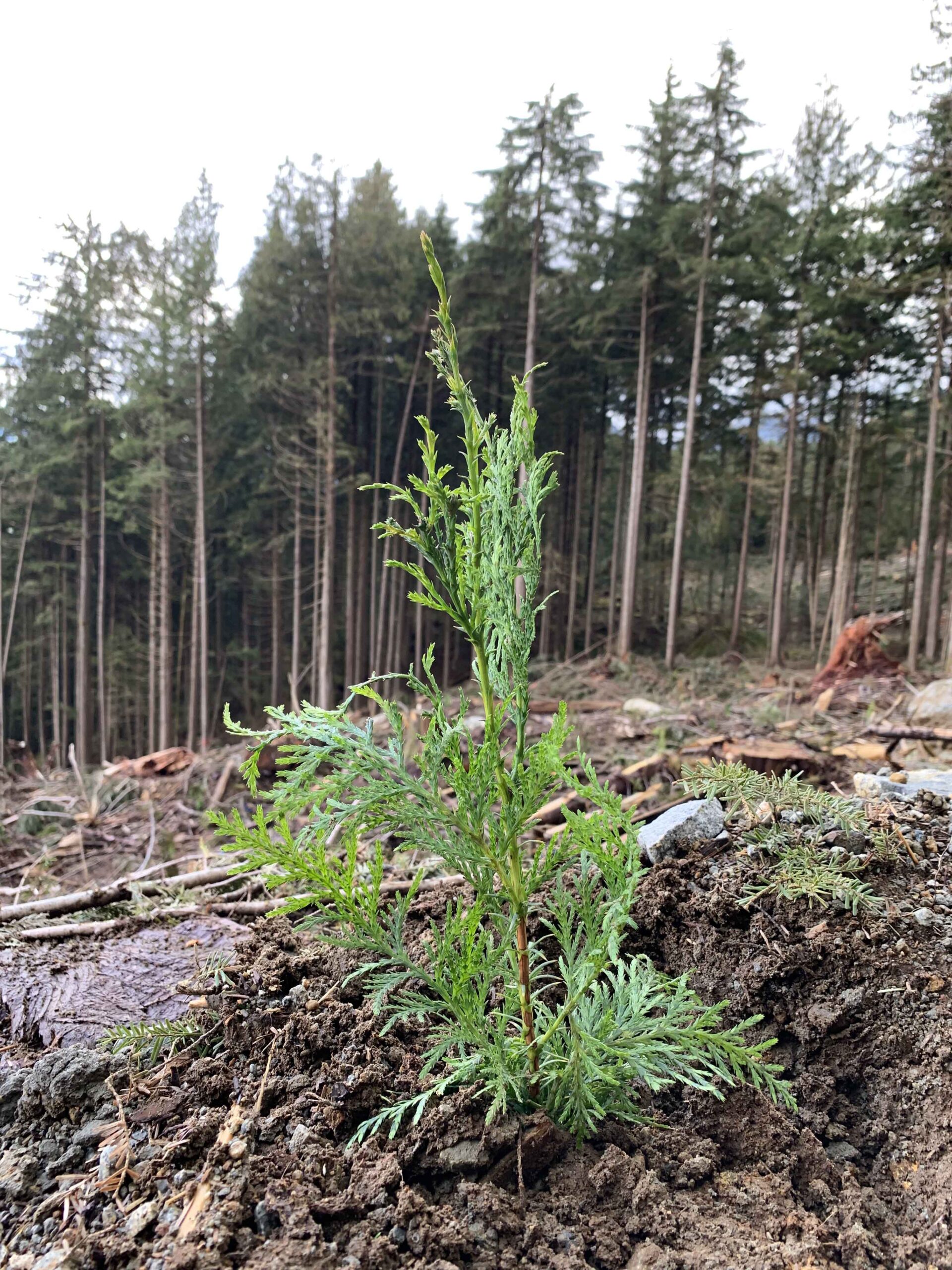 As the planet heats up, we need to reduce emissions of greenhouse gases. …‘nature-based climate solutions’ are human interventions that utilize natural processes to draw down carbon from the atmosphere. According to William Anderegg, director of the Wilkes Center for Climate Science and Policy at the University of Utah, planting forests is an especially promising option. “The central opportunity here is that we can leverage nature,” Anderegg says, “and forests globally have pretty large potential to help with climate change mitigation.” [However], Anderegg says …there are many problems with the programs that seek to plant forests as a climate solution.
As the planet heats up, we need to reduce emissions of greenhouse gases. …‘nature-based climate solutions’ are human interventions that utilize natural processes to draw down carbon from the atmosphere. According to William Anderegg, director of the Wilkes Center for Climate Science and Policy at the University of Utah, planting forests is an especially promising option. “The central opportunity here is that we can leverage nature,” Anderegg says, “and forests globally have pretty large potential to help with climate change mitigation.” [However], Anderegg says …there are many problems with the programs that seek to plant forests as a climate solution.  BILLINGS, Montana — A federal judge on Wednesday dismissed a lawsuit from young climate activists seeking to block President Donald Trump’s executive orders promoting fossil fuels and discouraging renewable energy. U.S. District Judge Dana Christensen said the plaintiffs showed overwhelming evidence climate change affects them and that it will worsen as a result of Trump’s orders. But Christensen concluded their request for the courts to intervene was “unworkable” because it was beyond the power of the judiciary to create environmental policies. The 22 plaintiffs included youths who prevailed in a landmark climate trial against the state of Montana in 2023. …Legal experts said the young activists and their lawyers from the environmental group Our Children’s Trust faced long odds in the federal case. …The climate activists will appeal Wednesday’s ruling, said Julia Olson, chief legal counsel at Our Children’s Trust.
BILLINGS, Montana — A federal judge on Wednesday dismissed a lawsuit from young climate activists seeking to block President Donald Trump’s executive orders promoting fossil fuels and discouraging renewable energy. U.S. District Judge Dana Christensen said the plaintiffs showed overwhelming evidence climate change affects them and that it will worsen as a result of Trump’s orders. But Christensen concluded their request for the courts to intervene was “unworkable” because it was beyond the power of the judiciary to create environmental policies. The 22 plaintiffs included youths who prevailed in a landmark climate trial against the state of Montana in 2023. …Legal experts said the young activists and their lawyers from the environmental group Our Children’s Trust faced long odds in the federal case. …The climate activists will appeal Wednesday’s ruling, said Julia Olson, chief legal counsel at Our Children’s Trust. Storing carbon in forests is an essential, nature-based buffer against climate change. Yet forests packed with too many trees increase the threat of severe wildfires… A team of UC Merced and collaborating researchers evaluated the tradeoffs between two seemingly opposing scenarios: Trees are critical because they pull carbon dioxide from the air, preventing carbon from adding to greenhouse effects that trap heat and warm the atmosphere; and the increasing severity and danger of wildfires call for the thinning of overly dense forests. The researchers found that the best approach is a combination of both.
Storing carbon in forests is an essential, nature-based buffer against climate change. Yet forests packed with too many trees increase the threat of severe wildfires… A team of UC Merced and collaborating researchers evaluated the tradeoffs between two seemingly opposing scenarios: Trees are critical because they pull carbon dioxide from the air, preventing carbon from adding to greenhouse effects that trap heat and warm the atmosphere; and the increasing severity and danger of wildfires call for the thinning of overly dense forests. The researchers found that the best approach is a combination of both.  PASCAGOULA, Mississippi — A fire is burning inside one of the wood pellet domes at the Port of Pascagoula. The fire started Monday afternoon inside one of the two Enviva domes at the port. Jackson County Emergency Management Director Earl Etheridge said there is no danger of explosion. Jackson County firefighters are on scene to assist Enviva and port crews. The fire started Monday afternoon inside one of the two Enviva domes at the port. …Etheridge says that Enviva is injecting the dome with pressurized nitrogen to suppress the fire. The fire is contained to the dome. Crews are working to offload the 20,000 metric tons of wood pellets.
PASCAGOULA, Mississippi — A fire is burning inside one of the wood pellet domes at the Port of Pascagoula. The fire started Monday afternoon inside one of the two Enviva domes at the port. Jackson County Emergency Management Director Earl Etheridge said there is no danger of explosion. Jackson County firefighters are on scene to assist Enviva and port crews. The fire started Monday afternoon inside one of the two Enviva domes at the port. …Etheridge says that Enviva is injecting the dome with pressurized nitrogen to suppress the fire. The fire is contained to the dome. Crews are working to offload the 20,000 metric tons of wood pellets. 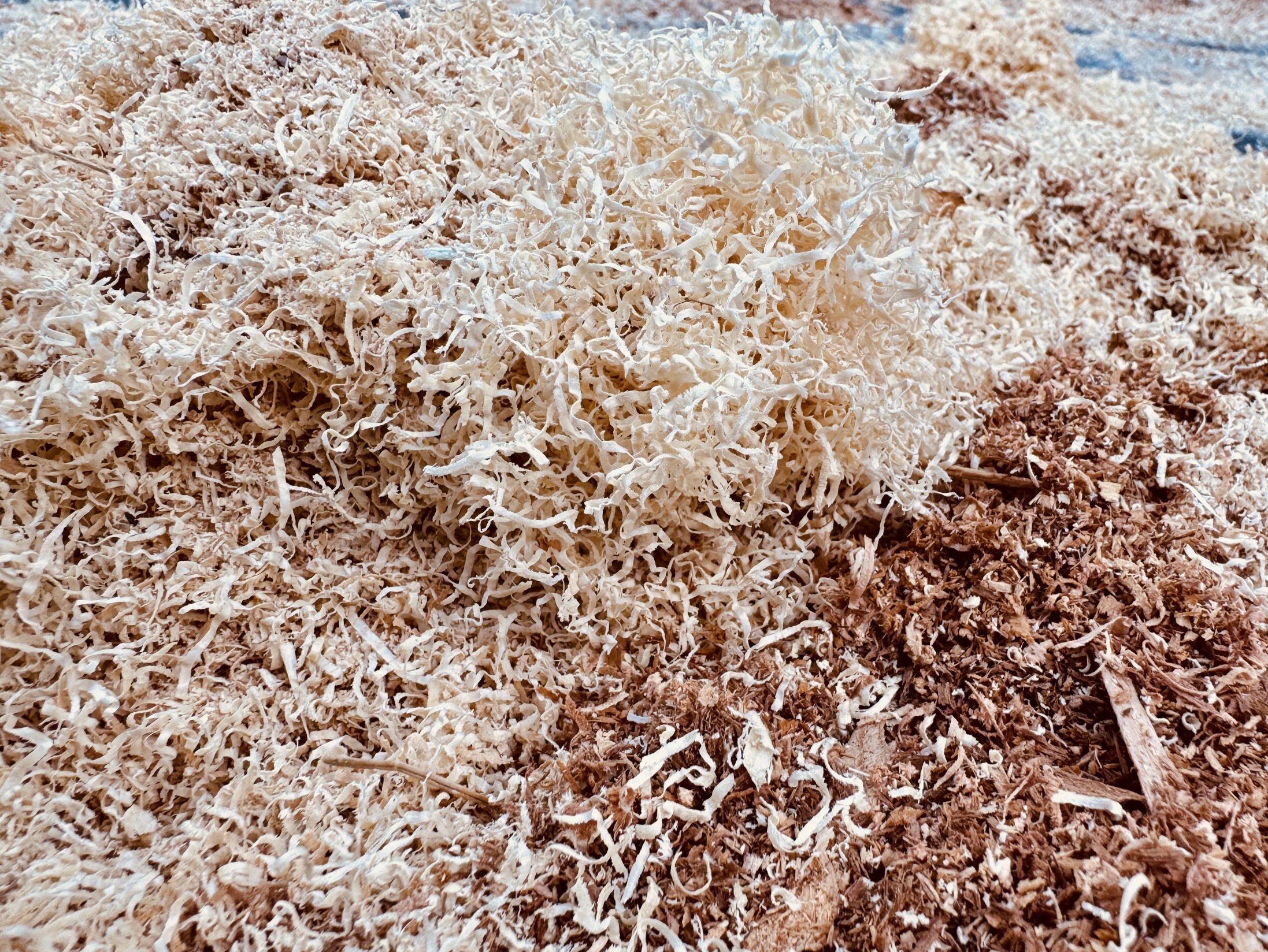 A study finds that replacing natural gas with electric and biomass power, along with improved energy efficiency, could help some pulp and paper mills reach zero net emissions. Researchers began with a simulation of mills defined by two characteristics: whether they used virgin or recycled fibers, and whether they were integrated or not. A virgin mill creates pulp and paper from fresh wood… while a recycled fiber mill re-uses fibers which may have been previously processed. A mill is considered integrated if it has the capability to turn wood and other biomass into pulp and paper on site, whereas a non-integrated mill uses pulp produced and dried off site. …The final strategy researchers analyzed was the use of low-carbon alternatives, like using waste wood in boilers instead of fossil fuels. The effectiveness changed depending on whether or not the mill was integrated, but all types saw reductions in greenhouse gas emissions.
A study finds that replacing natural gas with electric and biomass power, along with improved energy efficiency, could help some pulp and paper mills reach zero net emissions. Researchers began with a simulation of mills defined by two characteristics: whether they used virgin or recycled fibers, and whether they were integrated or not. A virgin mill creates pulp and paper from fresh wood… while a recycled fiber mill re-uses fibers which may have been previously processed. A mill is considered integrated if it has the capability to turn wood and other biomass into pulp and paper on site, whereas a non-integrated mill uses pulp produced and dried off site. …The final strategy researchers analyzed was the use of low-carbon alternatives, like using waste wood in boilers instead of fossil fuels. The effectiveness changed depending on whether or not the mill was integrated, but all types saw reductions in greenhouse gas emissions.
 BELEM, Brazil — Google has struck its biggest carbon removal deal, agreeing to finance restoration of the Amazon rainforest with Brazilian startup Mombak, as big tech hunts for high-quality credits to offset emissions tied to energy-hungry data centres. The companies said the deal would offset 200,000 metric tons of carbon emissions. …The agreement highlights how big tech is looking for ways to soften the climate impacts of its huge investment in power-intensive data centres for AI, driving demand to offset carbon emissions through Brazil’s nascent reforestation industry. Last year, Alphabet’s Google committed more than US$100 million to an array of different carbon capture technologies, from enhanced rock weathering and biochar to direct air capture and a project making rivers more acidic. But when it came time to double down, it was hard to beat the efficiency of planting trees. [to access the full story a Bloomberg subscription is required]
BELEM, Brazil — Google has struck its biggest carbon removal deal, agreeing to finance restoration of the Amazon rainforest with Brazilian startup Mombak, as big tech hunts for high-quality credits to offset emissions tied to energy-hungry data centres. The companies said the deal would offset 200,000 metric tons of carbon emissions. …The agreement highlights how big tech is looking for ways to soften the climate impacts of its huge investment in power-intensive data centres for AI, driving demand to offset carbon emissions through Brazil’s nascent reforestation industry. Last year, Alphabet’s Google committed more than US$100 million to an array of different carbon capture technologies, from enhanced rock weathering and biochar to direct air capture and a project making rivers more acidic. But when it came time to double down, it was hard to beat the efficiency of planting trees. [to access the full story a Bloomberg subscription is required] Britain’s biggest power plant will continue to earn more than £1m a day from burning wood pellets under a new government subsidy contract designed to halve its financial support, according to analysts. The Drax power plant in North Yorkshire is in line to earn £458.6m a year between 2027 and 2031 after the government agreed to extend its subsidies beyond 2026, according to analysts at Ember, a climate thinktank. The earnings are well below the £869m in subsidies handed to the Drax power plant last year for generating about 5% of the UK’s electricity from burning biomass after the government promised to curb the use of biomass in Britain’s power system. Under the contract, Drax will be paid to run just over a quarter of the time, down sharply from almost two-thirds of time currently. But the price it will earn for each unit of electricity generated will rise.
Britain’s biggest power plant will continue to earn more than £1m a day from burning wood pellets under a new government subsidy contract designed to halve its financial support, according to analysts. The Drax power plant in North Yorkshire is in line to earn £458.6m a year between 2027 and 2031 after the government agreed to extend its subsidies beyond 2026, according to analysts at Ember, a climate thinktank. The earnings are well below the £869m in subsidies handed to the Drax power plant last year for generating about 5% of the UK’s electricity from burning biomass after the government promised to curb the use of biomass in Britain’s power system. Under the contract, Drax will be paid to run just over a quarter of the time, down sharply from almost two-thirds of time currently. But the price it will earn for each unit of electricity generated will rise.
 Panama – Unveiled today at its General Assembly, the Forest Stewardship Council (FSC) reports a sharp slide in public concern for climate change, even after the hottest year on record. The 2025 Global Consumer Awareness Survey – conducted with Ipsos across 50 countries and 40,000+ respondents – find war and conflict (52%) now dominate public worries while climate change trails at 31%. That is a 21-point gap in the 2025 snapshot. Looking only at the 32 countries surveyed in both 2022 and 2025, the concern gap has widened from 12 points in 2022 – where economic hardship was on top position – to 16 points in 2025. …While ‘climate change’ may rank lower as an abstract global issue in the 50-country snapshot, across the forestry module markets, the impacts felt through forests –wildfires, droughts, floods, and biodiversity loss – rank among the top concerns within the forestry sector.
Panama – Unveiled today at its General Assembly, the Forest Stewardship Council (FSC) reports a sharp slide in public concern for climate change, even after the hottest year on record. The 2025 Global Consumer Awareness Survey – conducted with Ipsos across 50 countries and 40,000+ respondents – find war and conflict (52%) now dominate public worries while climate change trails at 31%. That is a 21-point gap in the 2025 snapshot. Looking only at the 32 countries surveyed in both 2022 and 2025, the concern gap has widened from 12 points in 2022 – where economic hardship was on top position – to 16 points in 2025. …While ‘climate change’ may rank lower as an abstract global issue in the 50-country snapshot, across the forestry module markets, the impacts felt through forests –wildfires, droughts, floods, and biodiversity loss – rank among the top concerns within the forestry sector.
 The Earth’s forests, soil and oceans are reaching their critical limits to naturally store carbon, as decades of climate change take their toll, according to a new analysis. The
The Earth’s forests, soil and oceans are reaching their critical limits to naturally store carbon, as decades of climate change take their toll, according to a new analysis. The  Google has announced plans to address greenhouse gases beyond carbon dioxide by purchasing credits to support the emerging market for removing short-lived but highly potent “superpollutants.” The company will buy up to 25,000 tonnes of superpollutant-destruction credits by 2030 from two organisations, Recoolit and Cool Effect—equivalent to about one million tonnes of CO₂ removal over the long term. While carbon dioxide remains a key focus, Google said gases such as methane, hydrofluorocarbons (HFCs), chlorofluorocarbons (CFCs) and nitrous oxide have a much greater near-term warming impact. “It’s the right thing to do for the planet,” said Randy Spock, Google’s carbon credits and removals lead. “CO₂ is obviously very important… but if we think only about CO₂, then we’re just looking at one piece of the puzzle.” …Sam Abernethy, a climate scientist at Spark Climate Solutions, said: “Superpollutants only get a few percent of climate finance… that’s a misallocation given their importance.”
Google has announced plans to address greenhouse gases beyond carbon dioxide by purchasing credits to support the emerging market for removing short-lived but highly potent “superpollutants.” The company will buy up to 25,000 tonnes of superpollutant-destruction credits by 2030 from two organisations, Recoolit and Cool Effect—equivalent to about one million tonnes of CO₂ removal over the long term. While carbon dioxide remains a key focus, Google said gases such as methane, hydrofluorocarbons (HFCs), chlorofluorocarbons (CFCs) and nitrous oxide have a much greater near-term warming impact. “It’s the right thing to do for the planet,” said Randy Spock, Google’s carbon credits and removals lead. “CO₂ is obviously very important… but if we think only about CO₂, then we’re just looking at one piece of the puzzle.” …Sam Abernethy, a climate scientist at Spark Climate Solutions, said: “Superpollutants only get a few percent of climate finance… that’s a misallocation given their importance.”
 GENEVA — Heat-trapping carbon dioxide levels in the atmosphere jumped by the highest amount on record last year, soaring to a level not seen in human civilization and “turbo-charging” the Earth’s climate and causing more extreme weather, the United Nations weather agency said Wednesday. The World Meteorological Organization said in its latest bulletin on greenhouse gases, an annual study released ahead of the U.N.’s annual climate conference, that CO2 growth rates have now tripled since the 1960s, and reached levels that existed more than 800,000 years ago. Emissions from burning coal, oil and gas, alongside more wildfires, have helped fan a “vicious climate cycle,” and people and industries continue to spew heat-trapping gases while the planet’s oceans and forests lose their ability to absorb them, the WMO report said.
GENEVA — Heat-trapping carbon dioxide levels in the atmosphere jumped by the highest amount on record last year, soaring to a level not seen in human civilization and “turbo-charging” the Earth’s climate and causing more extreme weather, the United Nations weather agency said Wednesday. The World Meteorological Organization said in its latest bulletin on greenhouse gases, an annual study released ahead of the U.N.’s annual climate conference, that CO2 growth rates have now tripled since the 1960s, and reached levels that existed more than 800,000 years ago. Emissions from burning coal, oil and gas, alongside more wildfires, have helped fan a “vicious climate cycle,” and people and industries continue to spew heat-trapping gases while the planet’s oceans and forests lose their ability to absorb them, the WMO report said.
 In 2024, the Amazon Rainforest underwent its most devastating forest fire season in more than two decades. According to a new study by the European Commission’s Joint Research Centre, the fire-driven forest degradation released an estimated 791 million metric tons of carbon dioxide in 2024, a sevenfold increase compared with the previous two years. The carbon emissions from fires in 2024 surpassed those from deforestation for the first time on record. Brazil was the largest contributor, accounting for 61% of these emissions, followed by Bolivia with 32%, the study found. “The escalating fire occurrence, driven by climate change and unsustainable land use, threatens to push the Amazon towards a catastrophic tipping point,” the authors write. …The researchers estimated that the total emissions from deforestation and fire-driven degradation in the Amazon in 2024 was 1,416 million metric tons of CO2. This is higher than Japan’s CO2 emissions in 2022, which ranked fifth after China, the U.S., India and Russia.
In 2024, the Amazon Rainforest underwent its most devastating forest fire season in more than two decades. According to a new study by the European Commission’s Joint Research Centre, the fire-driven forest degradation released an estimated 791 million metric tons of carbon dioxide in 2024, a sevenfold increase compared with the previous two years. The carbon emissions from fires in 2024 surpassed those from deforestation for the first time on record. Brazil was the largest contributor, accounting for 61% of these emissions, followed by Bolivia with 32%, the study found. “The escalating fire occurrence, driven by climate change and unsustainable land use, threatens to push the Amazon towards a catastrophic tipping point,” the authors write. …The researchers estimated that the total emissions from deforestation and fire-driven degradation in the Amazon in 2024 was 1,416 million metric tons of CO2. This is higher than Japan’s CO2 emissions in 2022, which ranked fifth after China, the U.S., India and Russia.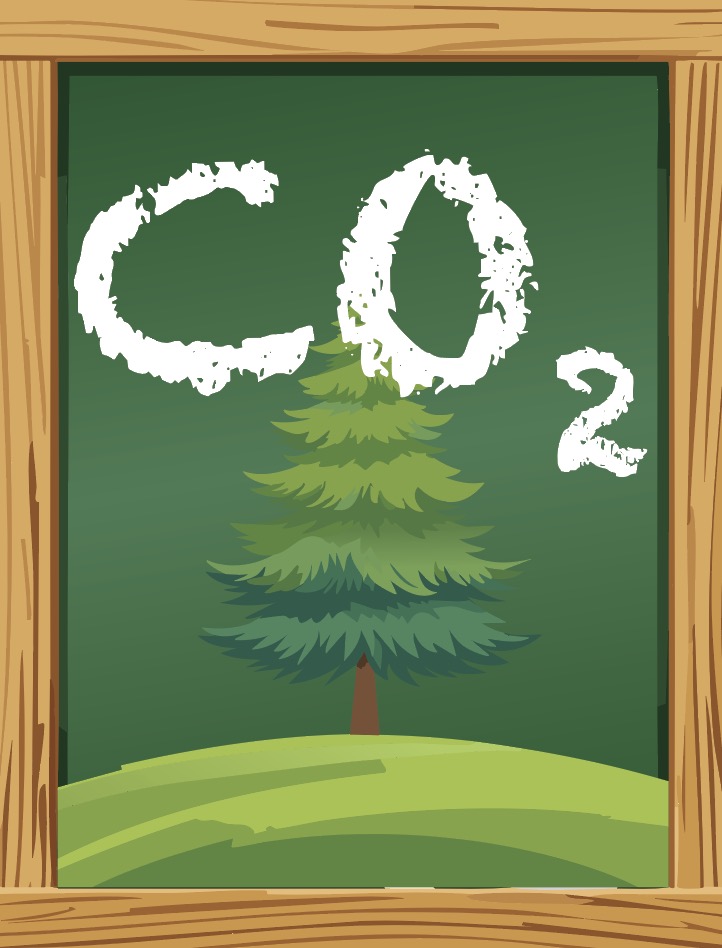 Josep “Pep” Canadell, executive director of the Global Carbon Project, says he believes countries large and small need to think twice before pledging to collectively plant billions of trees as a primary emissions-reduction strategy to meet climate action goals. “We have somehow sold reforestation as an easier path [to fighting climate change], and it’s not easy at all,” Canadell said. “In my view, it’s not even easier than carbon capture and storage, a technology we’re still developing. That’s because when you bring humans into landscapes and try managing these landscapes, this stuff becomes very complex.” Canadell is the co-author of a
Josep “Pep” Canadell, executive director of the Global Carbon Project, says he believes countries large and small need to think twice before pledging to collectively plant billions of trees as a primary emissions-reduction strategy to meet climate action goals. “We have somehow sold reforestation as an easier path [to fighting climate change], and it’s not easy at all,” Canadell said. “In my view, it’s not even easier than carbon capture and storage, a technology we’re still developing. That’s because when you bring humans into landscapes and try managing these landscapes, this stuff becomes very complex.” Canadell is the co-author of a  The biggest trees in the Amazon are growing larger and more numerous, according to a new study that shows how an intact rainforest can help draw carbon dioxide out of the atmosphere and sequester it in bark, trunk, branch and root. Scientists said
The biggest trees in the Amazon are growing larger and more numerous, according to a new study that shows how an intact rainforest can help draw carbon dioxide out of the atmosphere and sequester it in bark, trunk, branch and root. Scientists said